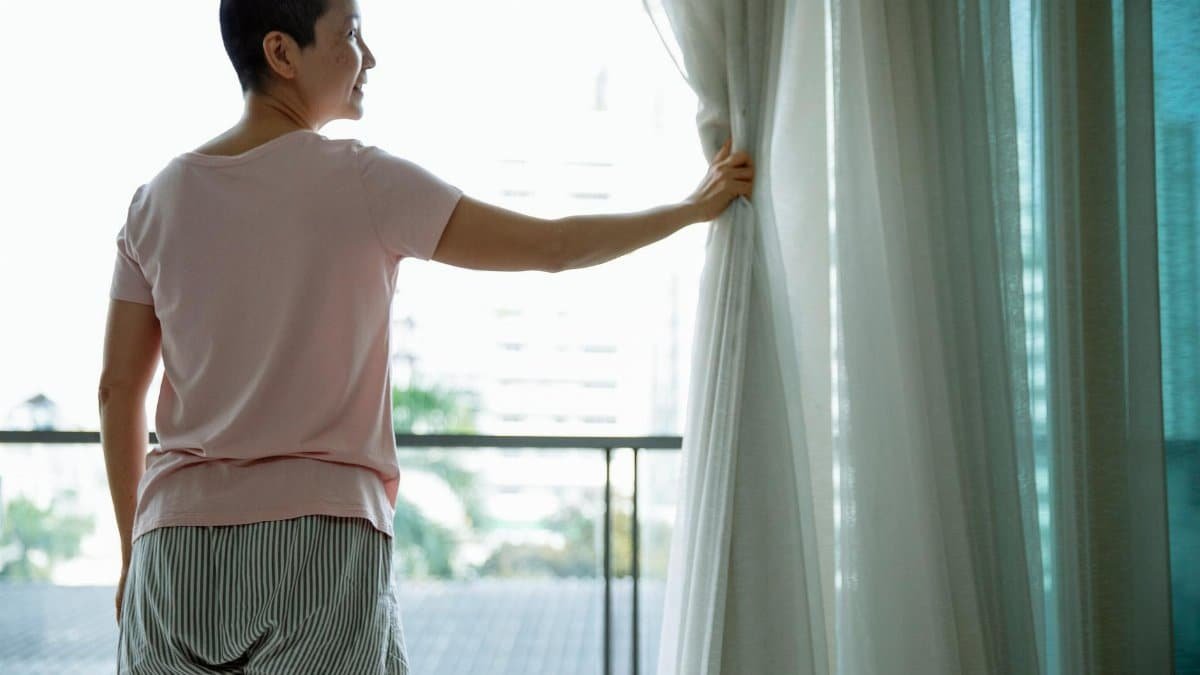A recent study from the National Institutes of Health found that nearly 10% of Americans experience some form of seasonal affective disorder during winter months, a figure that’s climbed steadily over the past decade. This surge highlights a growing struggle with the deep winter blues, where shorter days and limited sunlight disrupt mood and energy levels. Enter daylight curtain research, an emerging field exploring how specialized fabrics can filter natural light into homes without sacrificing warmth. These innovations promise to brighten indoor spaces, potentially easing the gloom that settles in when the sun hides early. Researchers are delving into materials that transmit daylight while blocking cold drafts, offering a simple yet scientific fix for those dreary seasons. It’s not just about aesthetics; it’s about harnessing light to support our internal clocks.
The Roots of Winter Blues and Light’s Role

Seasonal affective disorder, often dubbed the winter blues, isn’t a modern invention. It stems from our biological need for sunlight, which regulates everything from sleep patterns to serotonin levels. In northern latitudes, where days shorten dramatically, people report feeling lethargic, irritable, and disconnected. A landmark report from the National Institute of Mental Health details how reduced exposure to natural light throws off circadian rhythms, leading to these symptoms.
Imagine a family in Minnesota, huddled around a dim breakfast table as snow piles up outside. The mother notices her kids dragging through homework, their usual spark dimmed. This scene plays out in countless homes, but daylight curtain research suggests a shift. By studying how light penetrates fabrics, scientists aim to mimic the benefits of full-spectrum sunlight indoors. One approach involves analyzing wavelengths that influence melatonin production, ensuring mornings feel invigorating even on overcast days.
Not every fabric works the same. Traditional heavy drapes block both cold and light, exacerbating isolation. Lighter options let in glare but fail to insulate. The balance is delicate, and early experiments reveal that certain weaves can increase indoor luminance by up to 30% without heat loss.
Innovations in Fabric Technology

What makes a curtain “daylight-friendly”? It starts with materials engineered at the molecular level. Researchers at institutions like MIT have developed transparent thermal fabrics that scatter light evenly while reflecting infrared heat back into the room. These aren’t your grandmother’s lace panels; they’re high-tech blends of polymers and aerogels, designed to maximize visible light transmission.
Picture a lab in Cambridge, where engineers test swatches under simulated winter conditions. One prototype glows softly as artificial sunlight hits it, diffusing rays without harsh spots. This work, detailed in a paper from the Nature Energy journal, shows how such fabrics could reduce reliance on artificial lighting, cutting energy bills and boosting well-being.
Yet innovation brings questions. How do these materials hold up over time? Initial trials indicate durability, but real-world use varies. In one anonymized account shared publicly, a homeowner described installing prototype curtains and feeling an immediate lift in mood, as if the room had expanded with the incoming light. It’s these personal shifts that drive the research forward.
The process isn’t linear. Some fabrics excel in diffusion but fade quickly. Others prioritize insulation at the expense of clarity. Balancing these traits requires iterative testing, blending physics with practical home design.
Impact on Circadian Rhythms

Our bodies thrive on rhythm, and daylight plays conductor. When curtains filter light strategically, they can align indoor environments with natural cycles. Studies show that morning exposure to bright light suppresses melatonin, signaling the brain to wake up fully. Daylight curtain research builds on this by ensuring consistent light cues, even in sun-scarce winters.
Consider the case of urban apartments, where tall buildings cast long shadows. Residents often resort to lamps, but these lack the full spectrum of sunlight. A report from the Centers for Disease Control and Prevention on indoor lighting emphasizes how natural alternatives improve sleep quality and productivity.
One intriguing facet is the psychological boost. People report feeling more connected to the outdoors, reducing cabin fever. But there’s tension here: too much light can disrupt evenings, confusing the body’s wind-down signals. Researchers are fine-tuning designs to adapt, perhaps with adjustable layers that dim as needed.
This isn’t just theory. In controlled trials, participants using daylight-optimized curtains showed measurable improvements in mood scores, hinting at broader applications for mental health support.
Practical Applications in Home Design

Bringing daylight curtain research into everyday spaces starts with selection. Homeowners might opt for sheer thermals in bedrooms to greet the dawn gently, or layered options in living areas for all-day flexibility. Designers are incorporating these into renovations, especially in regions prone to long winters like the Pacific Northwest.
Take a Seattle architect who experimented with these fabrics in a client project. The result? A home that feels airy despite relentless rain, with energy savings to boot. Such stories illustrate the shift from novelty to necessity.
Integration isn’t without hurdles. Cost remains a barrier, though mass production is lowering prices. And installation requires thought: measuring windows precisely, considering room orientation. Yet the payoff—brighter mornings, steadier moods—makes it worthwhile for many.
Beyond homes, offices are adopting similar tech. Imagine workplaces where natural light flows freely, combating the afternoon slump. This ties into broader trends in biophilic design, where connecting with nature indoors enhances focus and creativity.
Challenges and Criticisms

No solution is flawless, and daylight curtain research faces scrutiny. Skeptics argue that while fabrics improve light access, they can’t replicate the full benefits of outdoor time. Vitamin D production, for instance, requires direct skin exposure, something curtains can’t provide.
Environmental concerns arise too. Manufacturing these advanced materials often involves chemicals that could harm ecosystems if not managed well. A study from the Environmental Protection Agency on sustainable textiles underscores the need for eco-friendly alternatives.
There’s also the equity angle. Not everyone can afford high-end curtains, leaving lower-income households in the literal dark. Researchers are pushing for accessible versions, perhaps through subsidies or DIY guides. One online discussion highlighted a user’s frustration with pricey options, prompting calls for inclusive innovation.
Despite these, the field evolves. Feedback loops from users refine designs, addressing gaps like allergen resistance or ease of cleaning.
Looking Ahead: Broader Implications

As climate patterns shift, winters may grow more unpredictable, amplifying the need for adaptive home tech. Daylight curtain research could expand to include smart features, like sensors that adjust opacity based on time of day.
In education, schools in northern states are piloting these curtains to help students stay alert. Early data suggests fewer absences due to fatigue. This ripple effect touches public health, potentially reducing reliance on medications for mood disorders.
Ultimately, it’s about reclaiming light in a world that often shuts it out. By blending science with daily life, these innovations offer a beacon for those navigating the deep winter blues.
Getting Started with Daylight Curtains

Ready to experiment? Begin by assessing your space’s light needs. Measure windows and note sun exposure. Affordable starters from brands like those tested in consumer reports can provide a low-risk entry.
Installation is straightforward: hang like regular curtains, but layer for versatility. Track your mood over weeks to gauge impact. For deeper dives, consult resources from lighting experts.
Remember, it’s not a cure-all. Pair with walks outside or light therapy lamps for comprehensive relief. As research progresses, options will only improve, making brighter winters accessible to more people.
The Human Element in Research

Behind the data are stories of resilience. Scientists aren’t just crunching numbers; they’re responding to real struggles. One researcher shared how her own winter lows inspired her work, turning personal challenge into communal benefit.
This human drive fuels progress, ensuring daylight curtain research remains grounded in empathy. As it advances, it reminds us that small changes—like letting in a bit more light—can illuminate much larger paths forward.
